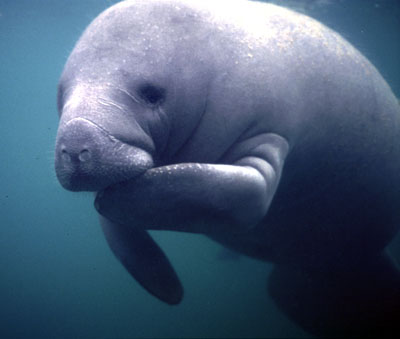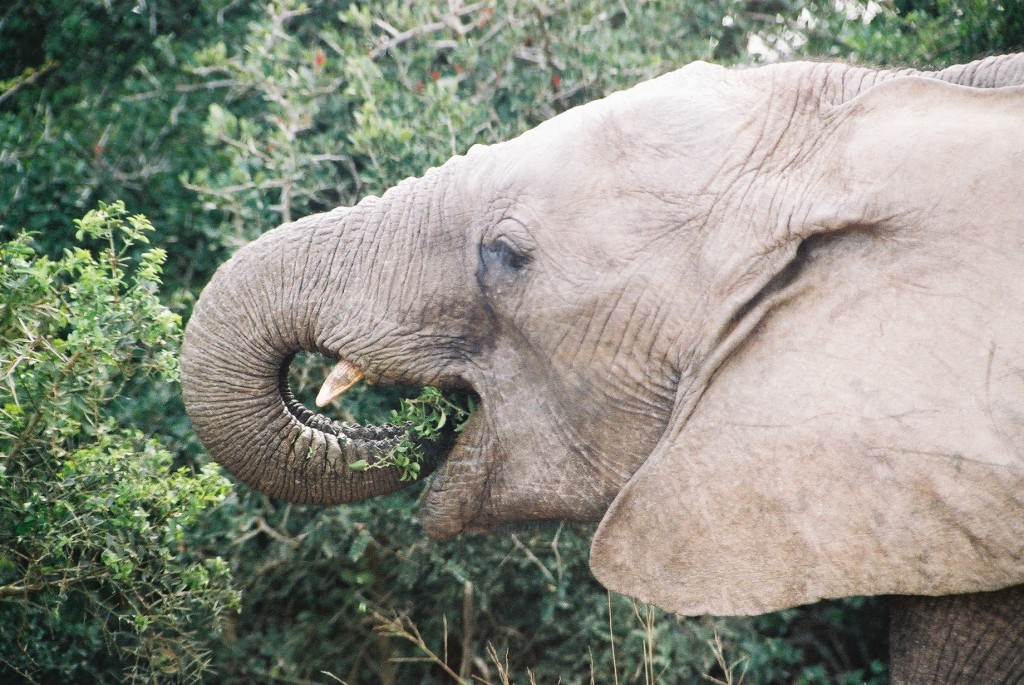It might be very difficult to imagine, but it’s true. Manatees (also known as ‘sea cows’) share a common ancestor with elephants which might come as a surprise if you thought manatees shared a common ancestor with other marine mammals such as dolphins, whales, or sea lions. Here are 10 facts that link manatees and elephants as long-lost relatives.
1. Scientifically, manatees and elephants are classified as subungulates. Other mammals in the Subungulata superorder are hyraxes and aardvarks.
2. Manatees and elephants have an uncommon-shaped heart that is spherical. To compare, most mammals have a single-pointed tip at the base (i.e., “heart”—shaped).
3. The West Indian and West African manatee have three or four fingernail-like structures on the tip of their flippers, just like that of the toenails on the feet of elephants.
4. Manatees and elephants both have a thick, gray skin with very sparse hair.
5. Manatees and elephants have molars which move toward the front of the mouth, eventually break off, and are restored by those at the rear. Elephants have a limited number while manatees are never-ending.
6. Manatees have two incisors that bear a resemblance to elephant tusks.
7. Manatees use their large, flexible muscular lips to break apart vegetation in the water and skillfully steer food to their mouths. This is very similar to the action of the elephant eating with his trunk.
8. Manatees and elephants are herbivores. Manatees tend to feast on sea grass and freshwater plants and consume up to 100-150 pounds a day. Elephants tend to feast on small plants, bushes, fruit, twigs, tree bark, and roots and consume up to 330-375 pounds a day.
9. Male manatees and elephants are known as bulls. Female manatees and elephants are known as cows. Young manatees and elephants are known as calves.
10. Manatees and elephants are both endangered. Their numbers have dropped due in a large part to human activities.
Manatee image (c) cruisenaplesflorida.com, elephant image (c) gallery.hd.org
Here is a fantastic teaching resource from the University of Florida Sea Grant extension I uncovered while pulling this post together.









Aw, you left out the best part. Manatee brains are smooth – http://www.manateebrain.org
Once I have got over my current Hurricane Sandy jag – direct hit on Abaco, Bahamas – may I put this on my Manatee page? It would be a good addition. Meanwhile Georgie, recently settling in as the only manatee in the Abacos, is awol since last week and may have shed her tag… the search continues. RH
Hi… Bahamas ‘manatee central’ calling again – can I use this VG piece please?
Thanks for your insight, I never thoughts of those two animals having anything in common. ~Kathy
I’m writing an article for the Ian Somerhalder foundation this month about manatees . I would love to use some of your info and include a link to your page. Is that possible? I will send you a link to my article when I’ve published it.
Sure thing, Alyson. Thanks for sending along a link once it’s published. I love reading information on manatees! Cheers 🙂
Excellent blog post. I certainly love this site.
Keep writing!